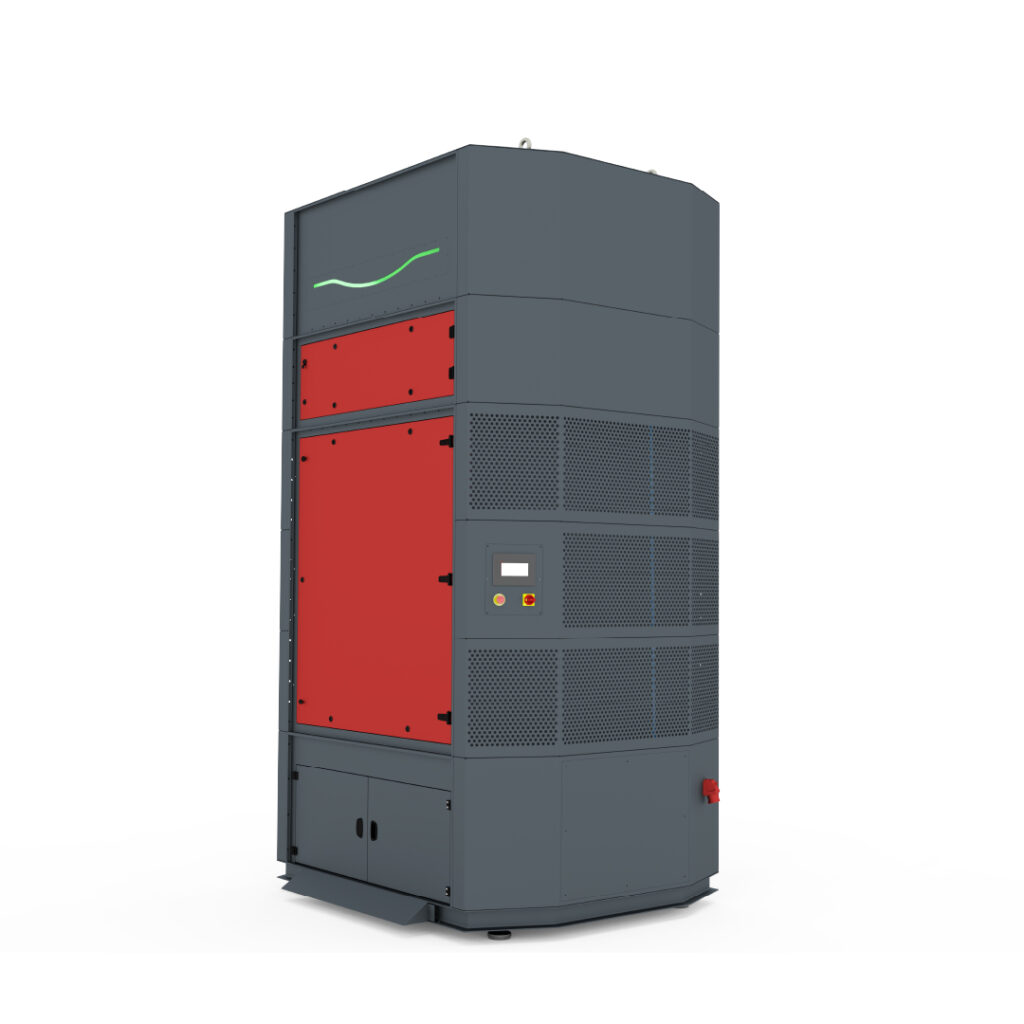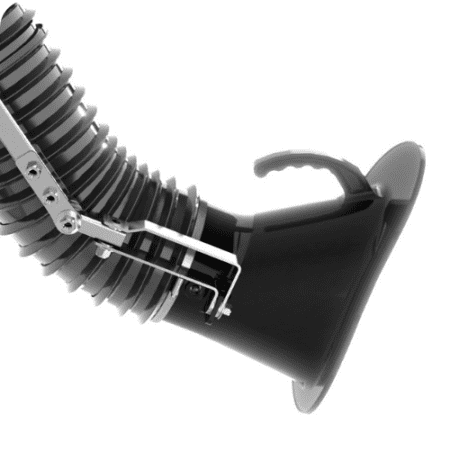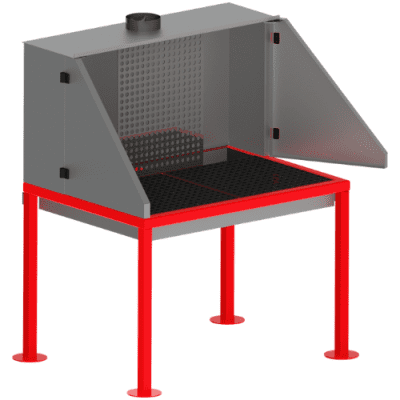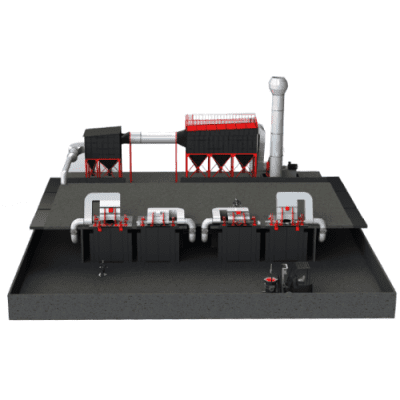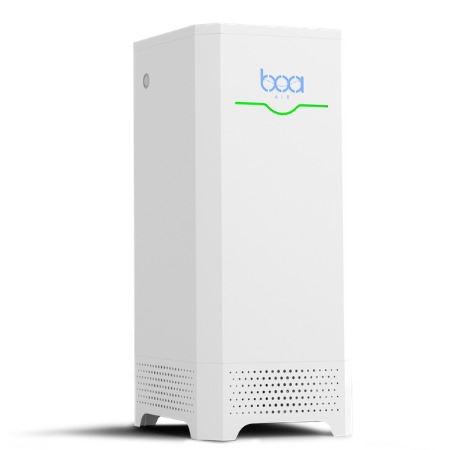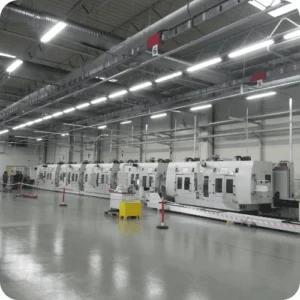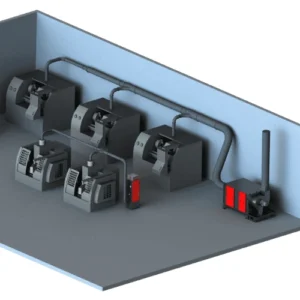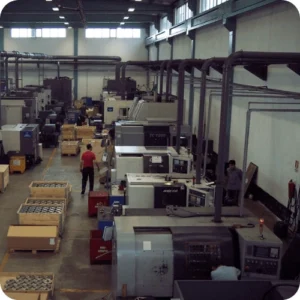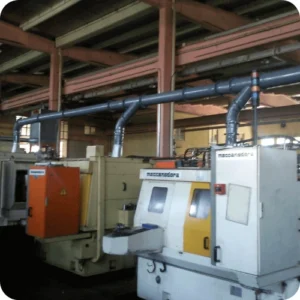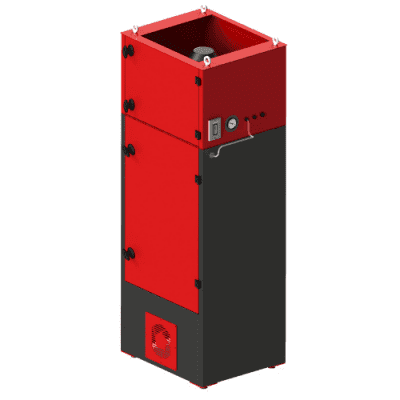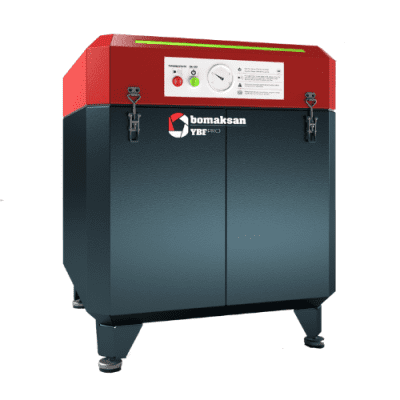Menu
Close
Machining
> Applications > Machining
Are You Looking For A Solution?
Bomaksan Clean Air Experts are here for you. Fill the request form now, get one step closer to the solution.

Machining Dust Collection
Table of Contents
Bomaksan provides all in one Oil Mist and Oil Fume Collection & Filtration Solutions for Customers
CNC (Computer Numerical Control) application is the general name of computer aided manufacturing techniques. CNC manufacturing is the type of manufacturing in which CAD (Computer Aided Design) and CAM (Computer Aided Manufacturing) programs determine and follow the steps of manufacturing. Although CNC processes are used in many manufacturing techniques, they are widely used in machining today. In CNC machining devices, cutting and coolant fluid is used to process metals faster and more accurately. These liquids evaporate due to the heat during the process and create oil vapor harmful to human health.

1. DUST AND FUME RELEASED DURING MACHINING

The resulting oil vapor is very harmful for CNC machining machines controlled by sensitive electronic devices and for the final product manufactured and must be evacuated from the device. The oil vapor discharged from the machine in an uncontrolled (without filter) way both damages other equipment in the factory and may accumulate on the floor and cause occupational accidents.
Oil vapors come from 2 different liquids; Coolant and Lubricating Fluid. Cooling liquids are divided into 3 among themselves;
1. Coolant
a. It is an oil solution containing emulsifying agents to mix (emulsify) oil in water.
b. Synthetic refrigerants, which are man-made chemicals and typically water soluble.
c. Emulsifiers that provide the benefits of emulsified oil and synthetic refrigerants, and semi-synthetics that are oil with partially synthetic chemicals.
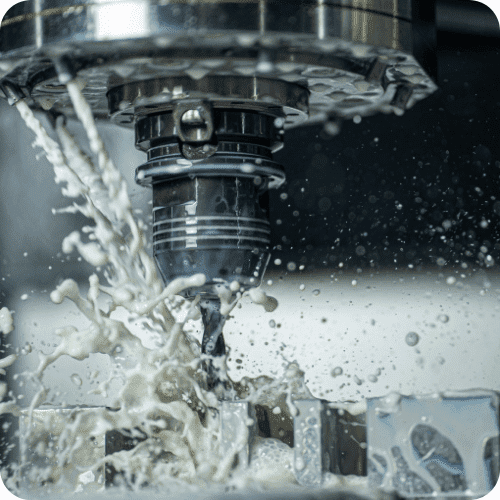
2. Lubricating Fluid
Coolants are called coolants because they do their cooling function better than lubricants. Water has a good capacity to dissipate heat, and as it evaporates, it is also inexpensive to replace water. Synthetic components developed by coolant manufacturers have a better capacity to lower the temperature of the cut material. Since the late 1990s, the amount of synthetic and semi-synthetic coolant used in manufacturing has increased significantly as the price of oil has risen and the production costs of synthetic coolants have fallen.
In coolants, the primary component that performs the lubrication role is petroleum oil. However, as the cooling fluid technology has developed over time, the ratio of petroleum oil in these mixtures has reached almost 0. The reduction in petroleum oil rate has, of course, reduced the lubricating properties of these liquids.
Paraffin wax in such liquids is the biggest problem of oil vapor collection systems. Usually paraffin wax is present in these liquids as much as 10%. The water in the cooling fluids evaporates, leaving a wax residue behind. This residual plaster renders the surface of the filters, rendering them non-functional. For this reason, paraffin wax is the biggest problem of oil mist filters.
Lubrication-focused fluids are usually directly petroleum oil. These liquids are generally 95% petroleum oil and 5% rust retardant, paint and scented substances. Petroleum oil is an excellent lubricant, but its cooling properties are very low (even the lowest among the fluids used for cooling purposes). For this reason, when used in applications with high temperatures, they burn and create oil smoke.
The smoke that forms when petroleum oil burns with the temperature has a much lower particle size compared to the cooling liquid vapor. This makes them much more dangerous for human health as well as very difficult to filter. Especially as the smoke that comes out gets darker, oil mist filters get harder, and the lighter the color, the easier it is. The reason for this is that the dark oil vapor contains more burning petroleum oil.
In order to create an efficient and healthy working environment, the smoke and steam caused by all these applications must be removed and filtered from the breathing air of the employees in a healthy and effective way. Factories that do not increase precautions for work accidents and occupational diseases, thanks to the increased awareness and awareness in recent years, both experience a shortage of qualified personnel and face lawsuits with serious consequences in the long term. Companies that take precautions against work accidents and occupational diseases at the highest level have increased productivity thanks to employee satisfaction as well as providing a sustainable production center.
2. WHAT SHOULD BE CONSIDERED WHEN DESIGNING THE SUCTION SYSTEM?
The main points to be considered while designing the ventilation system for the suction of the steam and smoke released during the machining application are as follows;
In-channel transport speeds
While carrying the oil vapor through channels, it is beneficial to keep the velocity inside the channel high. Otherwise, the oil will collapse into the channels over time and create a fire hazard.
Precautions Against Fire Risk
It has a fire risk depending on the type of machining material. In cases where this risk occurs, measures should be taken to ensure that the spark can reach the filter, and measures should be taken to minimize the damage in case of a possible fire.

Design for Reducing Electricity Consumption
There can be different machining applications in every industry. While some companies process small parts, some companies can process much larger parts. While some companies operate mainly on coolant, some companies may operate mainly on lubricating fluid. However, regardless of the application, the system designer must take the steam and smoke suction from the closest possible point in order to reduce the electricity consumption and the initial investment cost. In addition to being close to the suction point, the fact that the suction area is closed as much as possible will reduce the size of the device in the initial investment and minimize electricity consumption. Bomaksan Engineers will assist you in such system designs.
3. CHOOSING THE RIGHT FILTER UNIT FOR MACHINING
Systems used for the suction and filtration of vapors and fumes during machining are critical for the effective collection and filtration of submicron particles (less than 1 µm). ASHRAE (American Society of Heating, Refrigerating and Air Conditioning Engineers) uses the Minimum Efficiency Rating Value (MERV) criterion to determine the filter efficiency and capacity of particles within a certain size range. In the filtration of steam and smoke released during machining, filters should be used according to the type of liquid used and the type of smoke released.

Filter media (the area where dust and fumes are kept in the dust extraction unit) plays a critical role in the efficient filtering of fumes emitted during machining. In processes where the filter media cannot be selected correctly, undesirable results such as frequent clogging of the filters, high electricity consumption, frequent interruptions in the machining process may occur. Therefore, high quality filter media must be used.
By contacting our Bomaksan Clean Air Experts, you can get detailed information about the issues you should pay attention to while determining these criteria.

III Related Products
WHY BOMAKSAN?
Always With You On Your Way Of Excellence
As Bomaksan, we are aware of your desire to do your job perfectly. Excellence means both producing the best quality product, meeting the quality and deadline expectations of your customers and even exceeding them, creating a healthy and safe working environment and producing without harming the environment.
This is why your investment in Dedusting Systems and Clean Air is actually a direct investment you make to perfect your business.
- Reliable Partner With 35 Years Of Experience!
- ECO-Friendly Engineering Solutions.
- Solutions For Safe Working Environments
- Durable & Sustainable Solutions
Consult Our Clean Air Experts For A More Perfect Production Experience
You can leave your contact information for our Clean Air Experts to provide you with the best support.
You can leave your contact information for our Clean Air Experts to provide you with the best support.
We will try to answer you as soon as possible. In some cases, the response time may be 48 hours.
As a company, we know what we want and since we go with those demands, our supply-demand balance is well maintained. In this respect, Bomaksan is a signature brand. We found answers to all of our problems with need-oriented solutions and alternative approaches. Our satisfaction is always at the top as they do not compromise on fast service and product quality!
Mert EryılmazNETZSCH - Technical Manager 
A brand that always meets our expectations with its product quality. It has always been able to please us with the feedback and reactions towards our requests. Its place in the sector is always special with its engineering services and solution-oriented working principles!
Hakan KaplanTrakya Döküm - Assistant Business Engineer 
Communication and service quality is at the highest level in Bomaksan. Always a reliable and responsible company!
Yasin TeberLindsay Corporation - Maintanence Technician 
We would like to thank Bomaksan for not having any difficulties in communication with its timely service policy. We find answers to all our needs domestically, with the work they do globally!
Hüseyin MetinoğluAlbaksan A.Ş - Production Manager 
Bomaksan succeeded in making a difference in the sector with its equipment and product quality. We have always received the best service with their quick reactions to our demands. Fast, reliable and solution oriented.
Orhan KuzubaşPulver Kimya 
Bomaksan Dust Collection. It is an expert brand that has entered the production of Gas Treatment and Filtration devices and has managed to make a name for itself in the sector in a short time.
E-Newsletter Subscription
© 2017 - 2022 Bomaksan Industrial Air Filtration Systems. All Rights Reserved.




